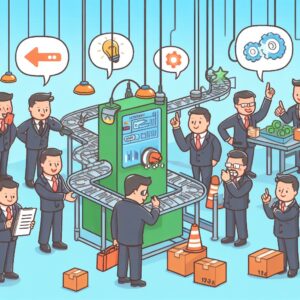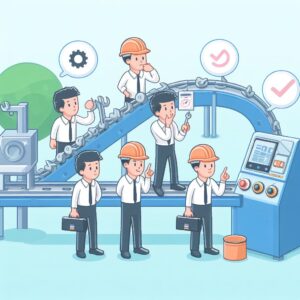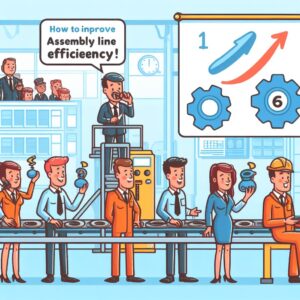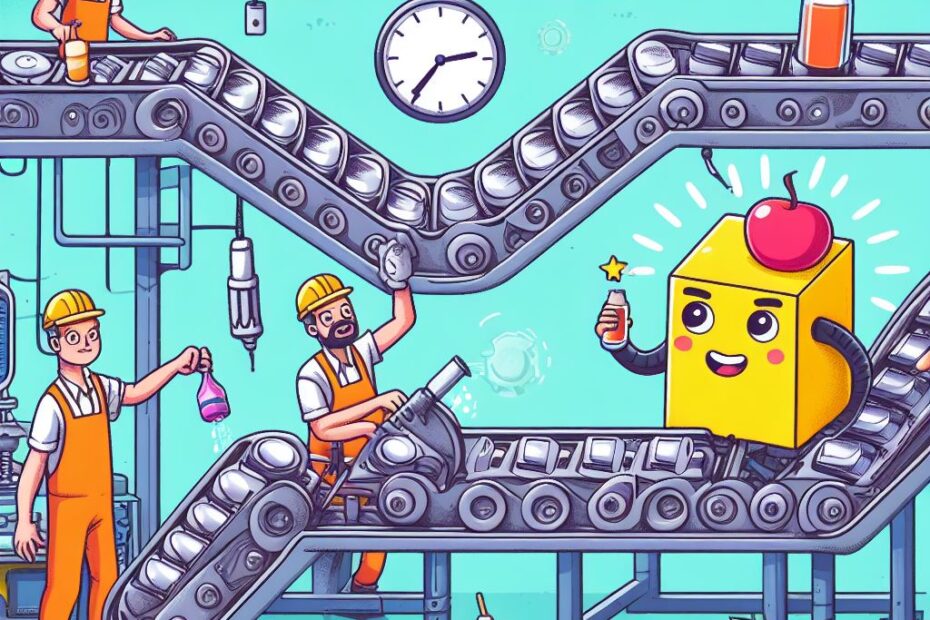In this article, we’ll provide you with a small guide on how to improve assembly line efficiency. Efficiency is crucial in any manufacturing operation, and assembly lines are no exception. Improving assembly line efficiency can lead to increased productivity, reduced costs, and improved quality.
Assessing Your Current Assembly Line
To improve the efficiency of your assembly line, it is essential to conduct a thorough assessment of your current operation. This process involves several key steps:
Identifying Bottlenecks:
The first step is to identify any bottlenecks in your assembly line. These are areas where production slows down or stops altogether, causing delays and reducing efficiency. By pinpointing these bottlenecks, you can develop strategies to eliminate them and streamline your production process.
Analyzing Production Data:
Another important step is to analyze your production data. This includes metrics such as cycle time, throughput, and defect rates. By analyzing this data, you can identify trends and patterns that may be impacting your efficiency, and develop strategies to address them.
Observing the Assembly Line:
Finally, it is important to observe your assembly line in action. This allows you to see firsthand how your production process works, and identify areas where improvements can be made. You may also want to solicit feedback from your employees, who may have valuable insights into how the assembly line can be improved.
Once you have completed your assessment, you can develop a plan to address any issues you have identified. This may involve reorganizing your production process, investing in new equipment or technology, or implementing new training programs for your employees. By taking a systematic approach to improving your assembly line efficiency, you can maximize productivity, reduce costs, and improve the quality of your products.

Streamlining Your Assembly Line
Streamlining your assembly line is a crucial step towards improving its efficiency. By eliminating unnecessary steps, reducing waste, and optimizing the flow of materials and products, you can significantly improve your production process. The National Institute of Standards and Technology (NIST) has highlighted the importance of streamlining assembly lines, as it can lead to significant improvements in productivity and quality.
To streamline your assembly line, you need to identify areas where improvements can be made. This may involve analyzing your production process, identifying bottlenecks, and eliminating unnecessary steps. You may also want to consider implementing lean manufacturing principles, which focus on reducing waste and maximizing efficiency.
Another important aspect of streamlining your assembly line is optimizing the flow of materials and products. This involves ensuring that materials and products move smoothly through the production process, without delays or interruptions. You may want to consider implementing a just-in-time (JIT) inventory system, which can help you minimize inventory costs and reduce waste.
Streamlining your assembly line requires a systematic approach and a willingness to make changes. By taking the time to analyze your production process, identify areas for improvement, and implement lean manufacturing principles, you can significantly improve your efficiency and productivity. This, in turn, can help you reduce costs, improve quality, and stay competitive in today’s fast-paced business environment.

Implementing Lean Manufacturing Principles
Implementing lean manufacturing principles is a powerful way to improve assembly line efficiency and reduce costs. Lean manufacturing is a methodology that focuses on eliminating waste and maximizing value. By adopting this approach, you can streamline your production process and improve your bottom line.
To implement lean manufacturing principles, you need to start by identifying non-value-added activities. These are activities that do not add value to your production process and can be eliminated without affecting the quality of your products. Once you have identified these activities, you can work on optimizing your workflows to eliminate waste and improve efficiency.
Another important aspect of lean manufacturing is empowering employees to make continuous improvements. This involves creating a culture of continuous improvement, where employees are encouraged to identify areas for improvement and implement changes. By involving your employees in the improvement process, you can tap into their knowledge and expertise, and create a more engaged and motivated workforce.
Implementing lean manufacturing principles requires a commitment to change and a willingness to challenge the status quo. By focusing on eliminating waste, optimizing workflows, and empowering employees, you can improve your assembly line efficiency and reduce costs. This, in turn, can help you stay competitive in today’s fast-paced business environment and achieve long-term success.

Investing in Automation
Investing in automation is a smart move for any business looking to improve assembly line efficiency. Automation is a powerful tool that can help you reduce the risk of errors, improve consistency, and increase throughput. By automating repetitive tasks, you can free up your workforce to focus on more complex and value-added activities.
The benefits of automation are clear, and many businesses are already taking advantage of this technology. According to the International Federation of Robotics (IFR), the use of industrial robots in manufacturing has increased by 85% over the past decade. This trend is expected to continue as more businesses recognize the benefits of automation and invest in this technology.
One of the key advantages of automation is its ability to improve quality and consistency. Automated systems can perform tasks with a high degree of accuracy and precision, reducing the risk of errors and defects. This can help you improve the quality of your products and reduce the need for rework or repairs.
Another advantage of automation is its ability to increase throughput. Automated systems can work around the clock, without the need for breaks or rest periods. This can help you increase production capacity and meet growing demand.
Investing in automation is a smart move for any business looking to improve assembly line efficiency. By taking advantage of this technology, you can reduce costs, improve quality, and increase throughput, helping you stay competitive in today’s fast-paced business environment.

Training Your Workforce
Investing in the training and development of your workforce is a crucial step towards improving the efficiency and quality of your assembly line. Your employees are a critical component of your business, and by providing them with the necessary skills and knowledge, you can unlock their full potential and drive your business forward.
One of the key benefits of training your workforce is the reduction of errors. When your employees are properly trained, they are less likely to make mistakes, which can lead to costly rework and delays. By investing in their training, you can ensure that they have the skills and knowledge they need to perform their jobs effectively and efficiently.
In addition to reducing errors, training your workforce can also improve productivity. When your employees are confident in their abilities and have a clear understanding of their roles and responsibilities, they are more likely to work efficiently and effectively. This can help you increase throughput and meet growing demand.
Investing in the training and development of your workforce can also increase job satisfaction. When your employees feel valued and supported, they are more likely to be engaged and motivated in their work. This can lead to higher levels of productivity, better quality work, and lower turnover rates.
Training your workforce is a smart investment that can pay dividends in terms of efficiency, quality, and job satisfaction. By providing your employees with the skills and knowledge they need to do their jobs effectively, you can unlock their full potential and drive your business forward.

Conclusion
Improving assembly line efficiency is a continuous process that requires ongoing attention and effort. By assessing your current operation, streamlining your assembly line, implementing lean manufacturing principles, investing in automation, and training your workforce, you can achieve significant improvements in productivity, quality, and cost-effectiveness. Remember to always prioritize safety and quality, and to make continuous improvements to your assembly line to stay ahead of the competition.
